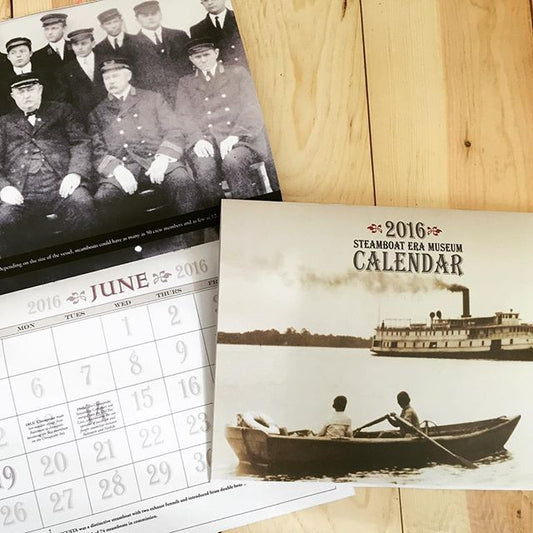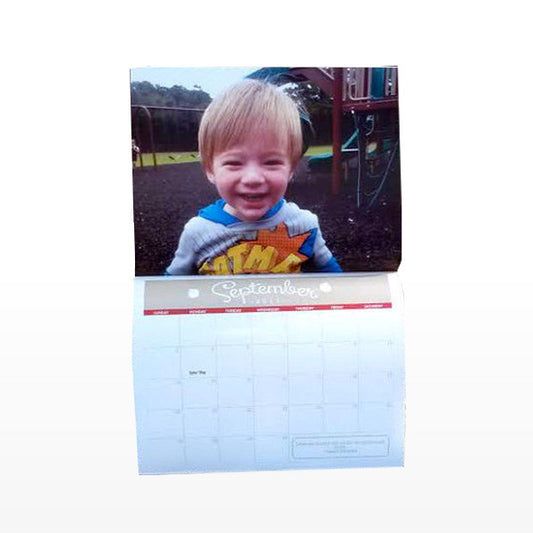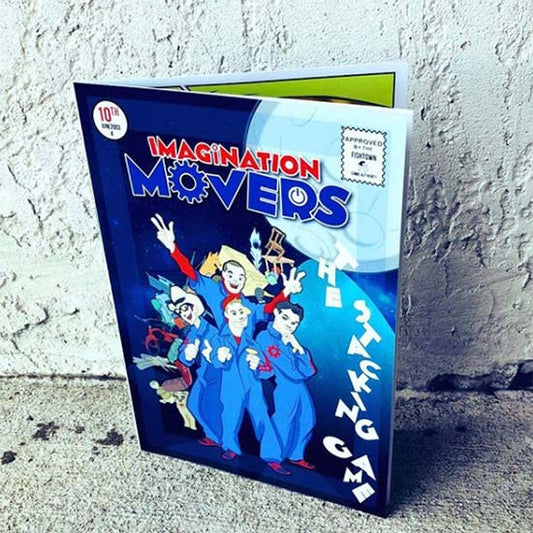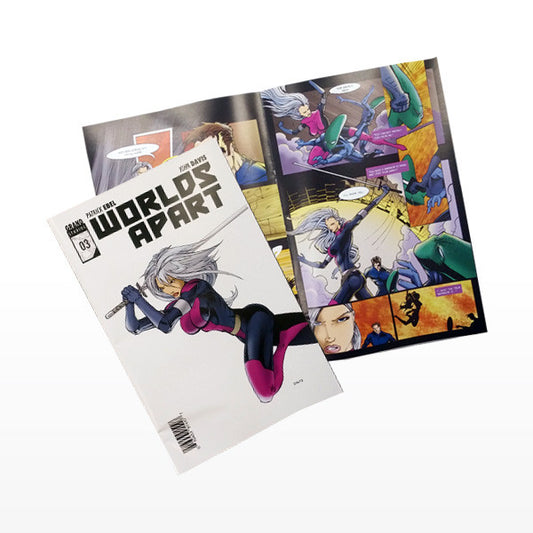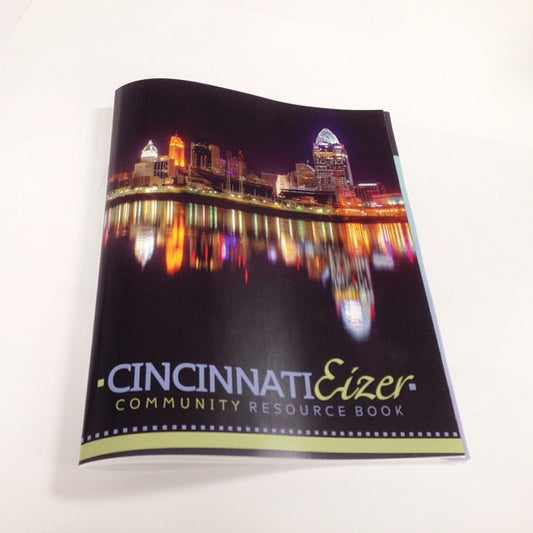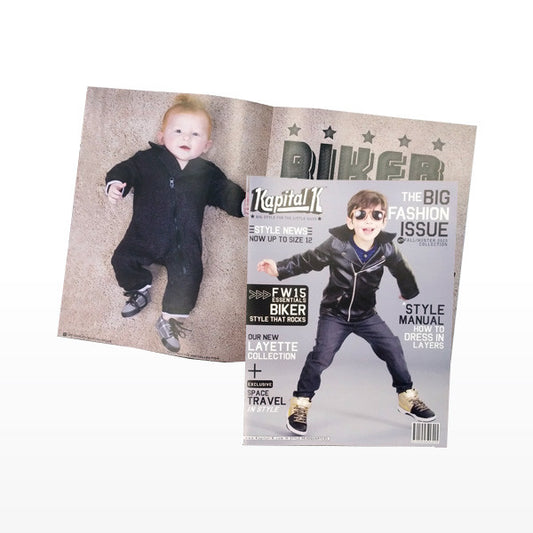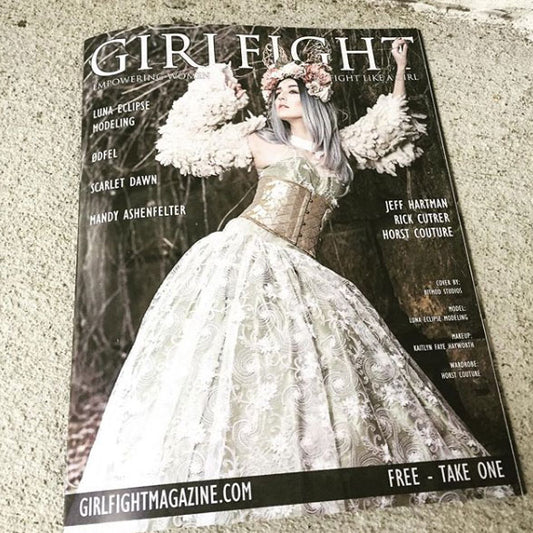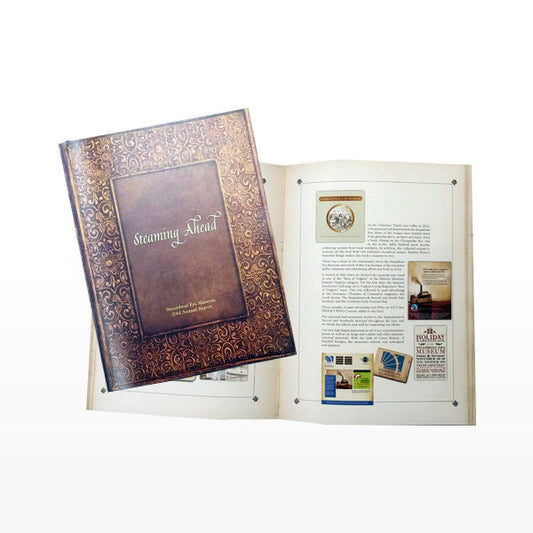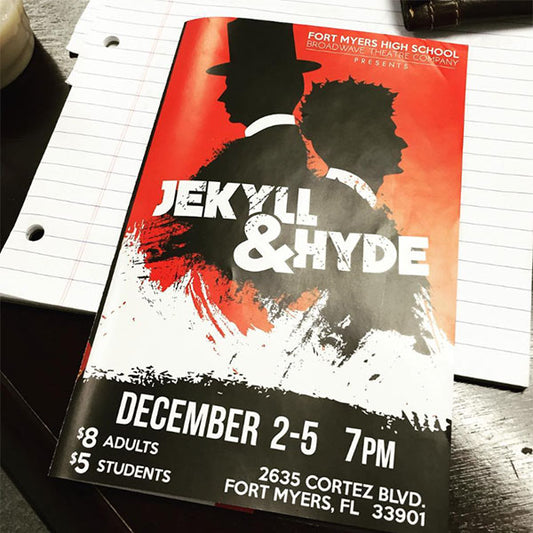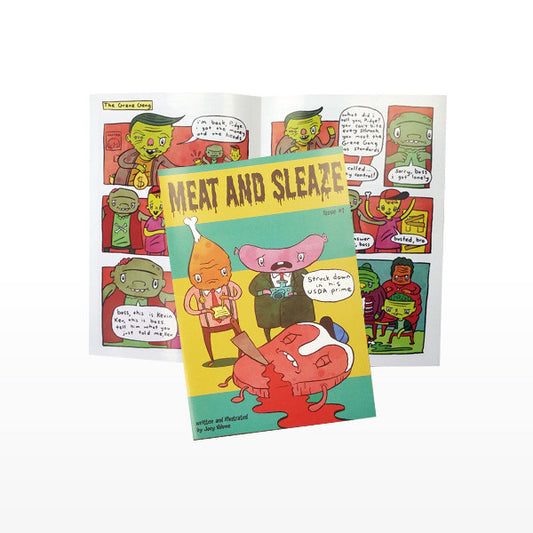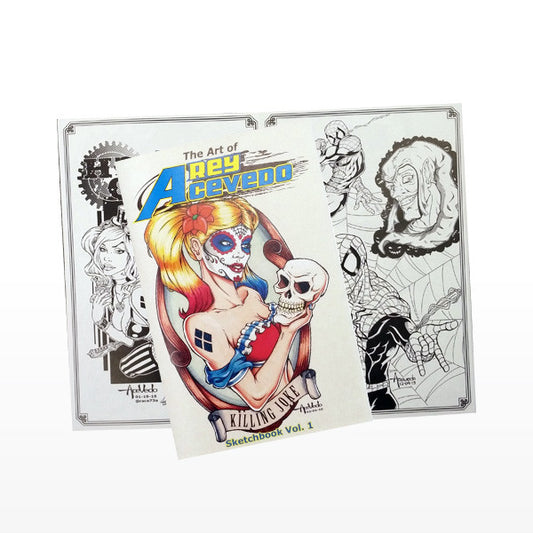Impress with Professional Booklet Printing.
We're incredibly proud of our booklet printing service. It's rare to find an online print company offering inexpensively low runs of such beautiful custom booklets. Another notable advantage of our booklet printing service is our staff's dedication to working closely with customers to meet deadlines and produce an incredible product. Printing any amount of booklets can be scary and nerve-wracking, which is why we work closely with you. Our staff remains committed to projecting timelines and assists in detecting quality concerns quickly.
Full-Size Booklets
Our most popular size, full-sized booklets, are 8.5" x 11". Two premium paper options and upgraded covers make these magazine-style booklets exquisite. We also boast a convenient minimum order of only one book.
Half Size Booklets
Our economical half-sized 5.5" x 8.5" booklets are more suitable for workbooks, playbills, and guides. These little guys print on gloss or matte paper stock with upgraded covers. Turnaround time usually consists of only a few days.
Calendars
Calendars are perfect for the holidays as gifts. These 28-page booklets are full-sized booklets with an upgraded cover. Create your custom calendar or send the art to us to handle. We can take your pictures and attach them to our calendar template if you do not have your completed file.
Comic Books
A staff favorite, comic books (6.75" x 10.25" or 7" x 10.25") are a joy to print. The variety of sequential art by talented artists passing through our doors each week is incredible. Gloss and matte paper types are available, but gloss is the most popular.
Incredible Value
As you can see, booklets come in many sizes: full size (8.5" x 11"), half-size (5.5" x 11"), calendars (8.5" x 11") and comic books (traditionally 7" x 10.25"). Booklets are folded and stapled and work best for catalogs, guides, playbills, magazines, and programs. When considering our fast turnaround, professional quality control, and premium printing, Printkeg offers the lowest prices for small runs of booklets anywhere.
Let's Talk About Art Setup
Setting up booklets for printing is an entirely different beast than products like flyers or posters. Try not to become overwhelmed with this aspect of booklet printing. However, there are a few things to think about before printing.
-
Resolution - Like all of our other products, we recommend 300dpi. The text will appear crisper if your booklet takes advantage of 600dpi. However, most people turn in booklet files at the 300dpi. Anything less may result in blurriness.
-
Color Mode - Our staff prints all booklets in CMYK color mode. We stick to the "all-purpose" "US Web Coated (SWOP)" color profile, which is available in Adobe software. If you do not understand this jargon, do not worry about it. We convert everything. If you are not in a hurry, we recommend ordering a single booklet print before making a large order. A digital proof is not nearly as helpful as a tangible booklet in your hands.
-
Bleed Area - Every booklet product on our website provides details about page sizes. Be sure to give us a quarter-inch bleed area on each page. For example, each page in a full-sized booklet should be 8.75 x 11.25", not 8.5 x 11." Do not add trim marks to your file.
-
Arranging Pages - You can provide files to us as multi-page documents, individual files, or spreads. Learn more about arranging booklet pages on our blog. We prefer multi-page documents in numerical order.
If you are confused, don't worry! Most software takes care of the complicated stuff. We invite you to contact us regarding your next booklet project if you still have questions.
Booklet Printing FAQ
Should I choose gloss or matte for my custom booklet?
If you prefer a classic shine, then gloss is the way to go. We usually recommend the glossy paper for projects like magazines, catalogs, playbills, calendars, and comic books.
The matte paper does have advantages. These uncoated booklets feel a little heavier, especially with an upgraded cover. We prefer this paper for coloring books or booklet projects associated with the need for writing. The matte is also smooth, opaque, and luxurious.
What's the difference between pages and sheets?
Each page of a multi-page document is one page, including blank pages. Most people do not need to worry about sheets. There are four pages to one sheet, so we offer "pages" options in multiples of four.
How should my booklets be set up?
Each page in your multi-page PDF should match your desired print size plus 1/8" bleed on all sides. This means the pages for a full-size 8.5" x 11" booklet should be 8.75" x 11.25". Your multi-page PDF page count should match your booklet's page count. We strongly advise that all graphics in your file be 300 dpi resolution or higher.
How should I arrange my pages?
We prefer you to set up your booklet as a multi-page PDF, starting with the cover being page one. You can also send us spreads or individual files for each page. Take time to explore more information about the page set up on our blog.
Can I order a PDF or physical proof?
Please let us know in your order's instructions if you want a PDF proof. This proof is free, but it is also not 100% accurate. We highly recommend ordering a physical copy if you have enough time before your deadline. You can add a $25 physical proof to your order or make a single booklet order before committing to a more extensive run. Video proofs are also available.
Do you provide discounts beyond what the website shows?
No, the available discounts for booklets end once you reach 250 pieces. However, you will see that price structures are incredible when compared to other online booklet printing companies. We offer a reseller program for artists and nonprofits that provides further consistent discounts.
Are booklets full color?
All booklets are full CMYK color and full bleed. Unfortunately, we do not offer a grayscale alternative at lower prices. The price will be the same if your booklet is black and white only.
Why are stapled booklets called “saddle-stitching” on most print websites?
The term “saddle-stitching” comes from how a booklet is bound. During the production phase, printers bend booklet pages over a device that appears similar to a saddle. Through the years, the name stuck. Today, any bookbinding process that uses wire staples is typically called saddle-stitching.
"I loved every part of this experience. The checkout option was easy, and I appreciated the response time and diligence in making sure my booklet was correct. Then the print time was fast, and when I received my booklets, they came back beautiful. I will definitely use this company again, and have already recommended to others."
"I just got these in the mail, and they are beyond my expectations! I just wanted to say thank you, and I will be placing another order very soon!!
The Tech Behind Booklet Printing
We produce custom booklets using the latest advancements in digital press technologies.
Digital presses give us advantages for printing full-size and half-size custom books. We can print them within a small window of time and provide low to no minimums. Combine this with an outstanding CMYK color spectrum for a final high-end product delivered to your door quickly.
The Process of Printing Your Books
- You pick out the booklet type you need and add them to your cart, similar to most other shopping websites. During this step, you can upload your art file, calculate shipping rates, and make payments.
- After you finish checking out, we begin to inspect your artwork thoughtfully. One of our art specialists reviews your booklet file and sends it to our production department if everything looks good. If that artist detects any barriers she cannot quickly resolve, she will contact you by email. We are primarily looking for proper page sizes, layout, and bleed area.
- We compare the first physical booklet we make to your digital file, searching for discrepancies.
- Once your booklet order moves into total production, you will receive updates by email. The earliest notification provides you with an estimated print and ship date. Follow-up emails usually continue once we complete printing, then when tracking is made available from shipping. We believe communication is crucial.
- You receive your custom booklets within a few days.
Start Printing Booklets Today!
The Printkeg Promise
The process of printing booklets does not need to be complicated, but it can feel challenging. At Printkeg, you can print one book or one thousand. When clients set up art files incorrectly, we guide them through the issues. Worst case, we can fix most booklet files for only $29. We promise to help you convert your digital documents into beautiful booklets and quickly deliver them to your door.
Booklet Printing Can Be Fast
We ship most custom booklet orders within three business days if there are no art difficulties. Even larger orders will take less than one week. If you provide a deadline in your order's instructions area, we will help you meet that goal to the best of our ability.
Customized Booklet Orders
We can print booklet orders in huge quantities, UV-coated covers, different sizes, and perfect binding. If there are features you cannot find on our website, contact one of our customer service representatives with your project specifications.
Three Ways To Send Us Files for Booklet Printing
1. Numerical Order
This format is the file setup we prefer. If you order a 24-page booklet, send us a 24-page multi-page document with the cover as page one. For a full-size 8.5" x 11" booklet, each page size should be 8.75" x 11.25". Size your pages for half-size booklet pages 5.75" x 8.75".
2. Printer Spread
The pages shown in printer spreads are not in numerical order. They don't appear in correct numerical order until the pages are folded and bound into a saddle-stitched booklet. One advantage of printer spreads includes better alignment for large pictures encompassing more than a single page. Picture demonstrating how this setup works are available on our blog here.
3. Separate Files
You can send each page to us as individual files. We are more than happy to stitch the pages together for you. We only ask that you name the files in ascending numerical order. For instance, the cover file should be called "1.pdf" or "page1.jpg," and so on. This method helps us ensure we correctly arrange your pages.
Booklet Printing Tutorials
How to Arrange Pages When Printing Booklets
Our print company produces booklets with the Saddle-Stitch binding method. This arrangement combines sheets folded in half and then stapled through the fold line with wire staples. The staples pass through the folded crease from the outside and clinch between the centermost pages. Learn more about how to arrange pages on our blog.
Step-By-Step Instructions To Format Your Booklet Using Adobe InDesign
As the Art Director at Printkeg, I receive numerous questions about setting up booklets for print. Most of the customers who are inquiring about setup are using the Adobe program InDesign. For step-by-step instructions, I will be showing how to set up a 12-page, full-sized booklet using InDesign.
Learn More About Each Option for Booklet Printing
Undoubtedly, PrintKEG prints some seriously excellent booklets and newsletters. Each booklet is a full bleed, saddle-stiched (fancy term for stapled), and full color making them great for almost any book type including comic books, calendars, event guides, and playbills. Go more in-depth about the different options available for custom booklets.
Three Common Booklet Printing Mistakes We See Most.
Our internal designers inspect booklet files closely to guarantee a polished experience. Below, we list three of the most common obstacles we face when producing custom booklets for clients. Take a deep breath; our team is here to guide you through the entire process.
- Procrastination - Avoid waiting too long to order your custom booklets. Even though we can usually produce projects in only a few days, we recommend allowing eight to ten business days. This provides time for potential delays like hardware malfunctions, shipping transit mishaps, and artwork complications.
- Content Too Close to Edges - We ask you to keep items a quarter-inch away from the edges of each page. Essential items may include titles, text areas, logos, page numbers, photographs, or other components you prefer us not to clip.
- Not Adding Bleed Area - For us to print a full-size booklet with edge-to-edge graphics, your file should be 8.75" x 11.25" and not 8.5" x 11". Your pages should extend .25-inches than the actual booklet size - this is true for half-size booklets, comic books, and calendars. In some cases, we will automatically adjust. But we may ask your designer to make the changes if that process becomes cumbersome.

